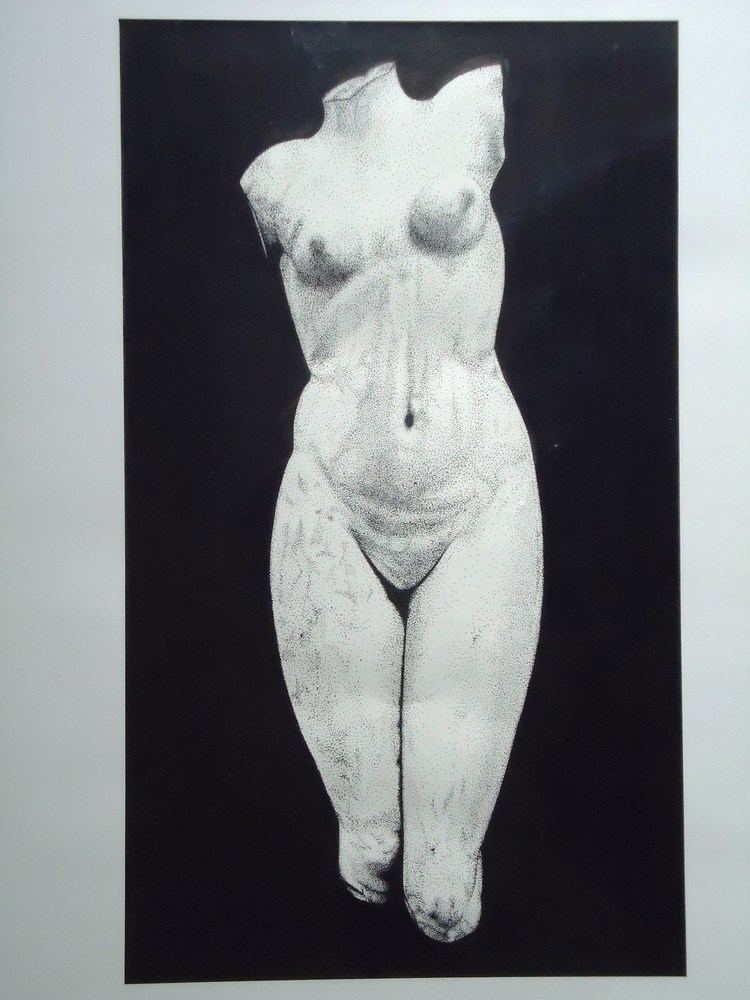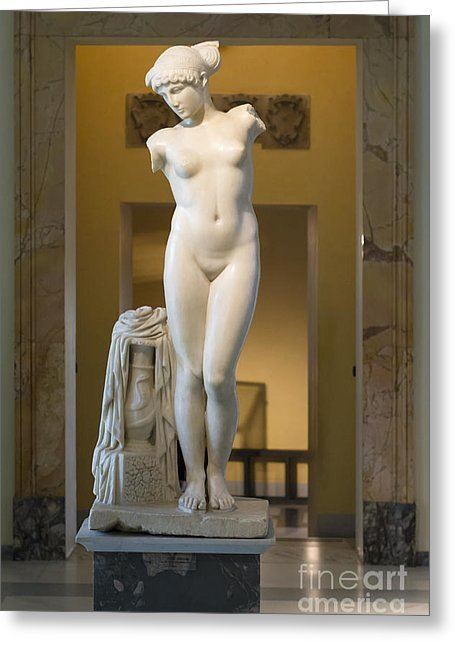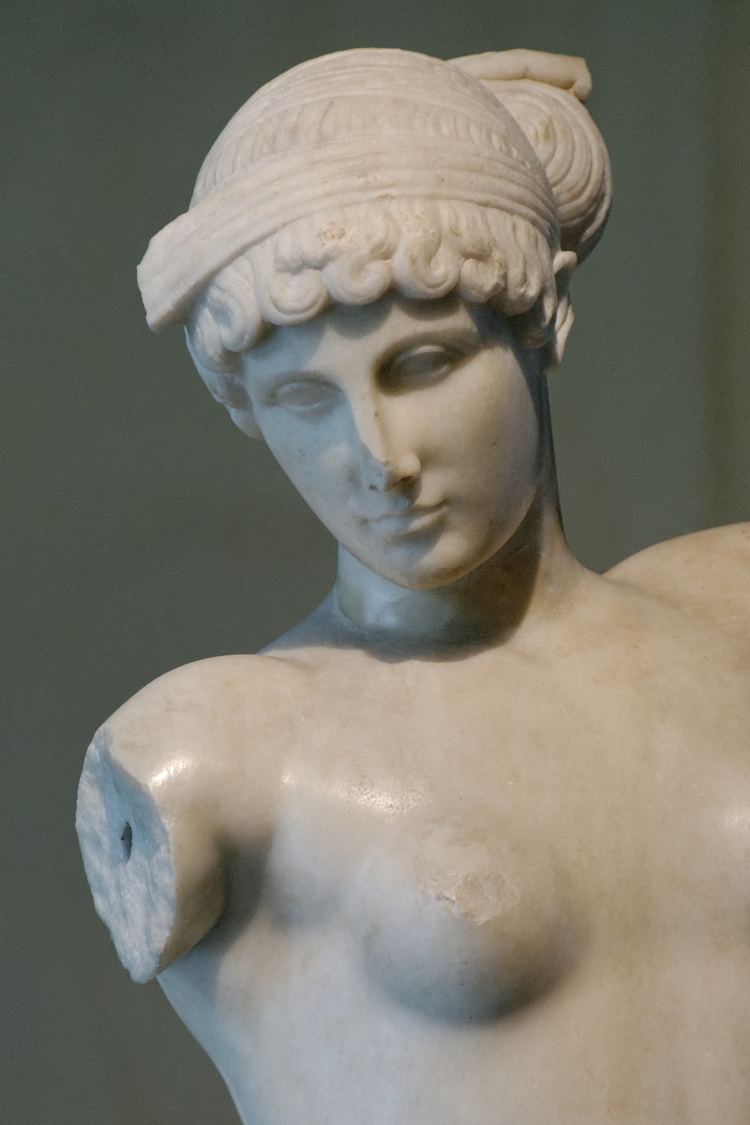Artist Anon. | Year c.50 | |
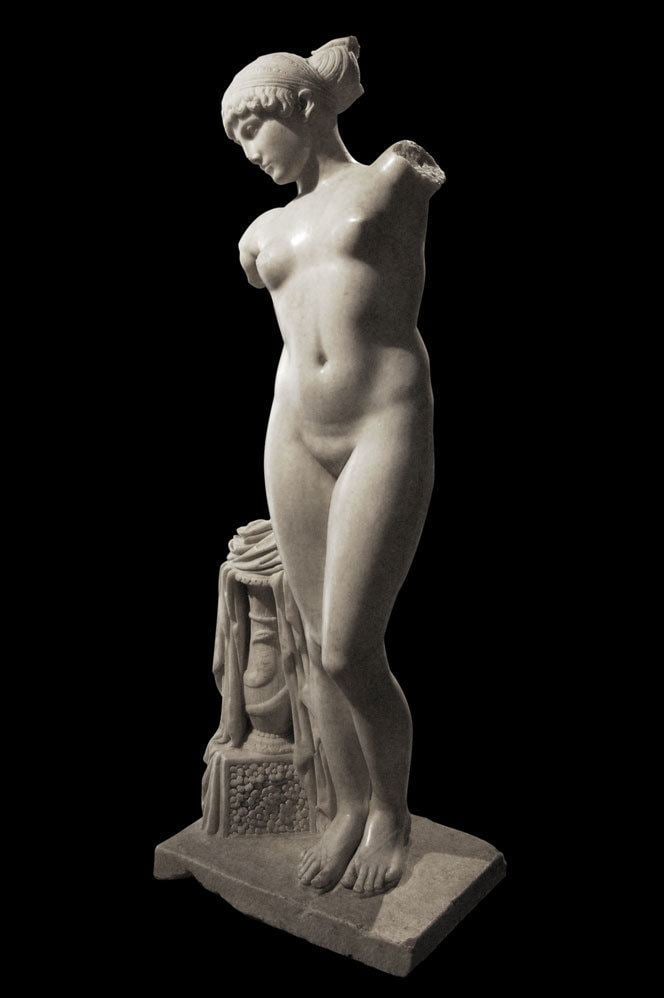 | ||
Similar | ||
60 esquiline venus statue
The Esquiline Venus is a smaller-than-life-size Roman nude marble sculpture of a female in a sandal and headdress.
Contents
History
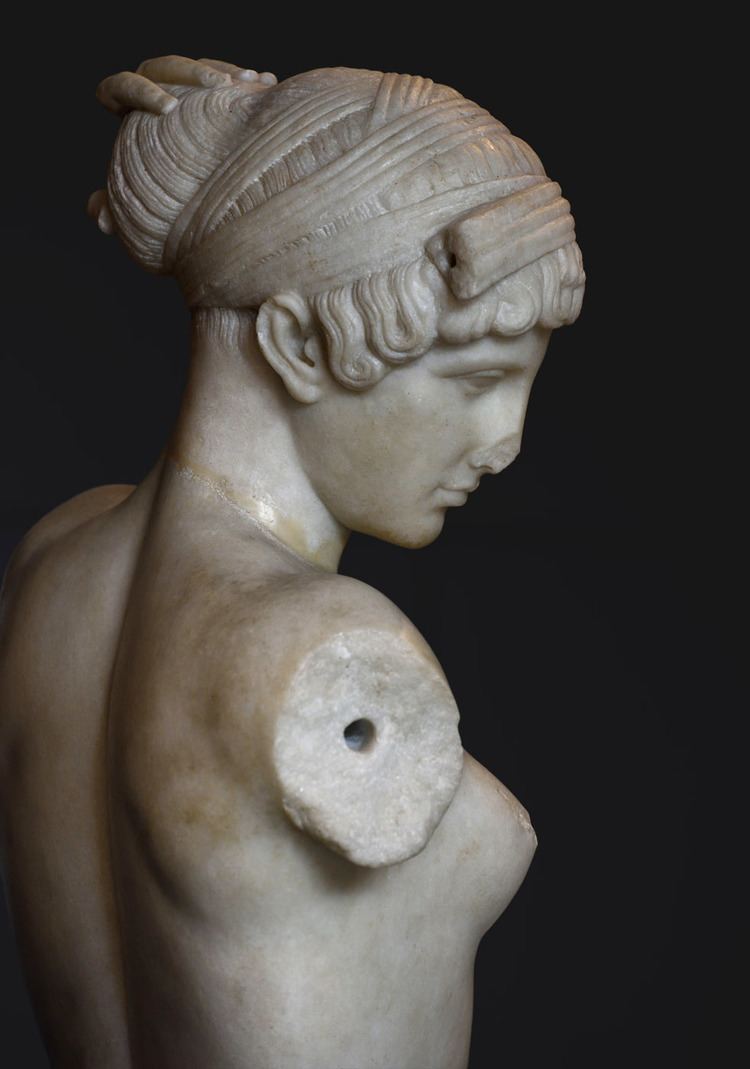
It was found in 1874 in Piazza Dante on the Esquiline Hill in Rome, probably part of the site of the Horti Lamiani, one of the imperial gardens, rich archaeological sources of classical sculpture. In the 16th and 17th centuries, the thirteen Medici Niobids, a variant of the Laocoön and his Sons, the bust of Commodus with the attributes of Hercules, and the Discobolus had already been found here. After 1870 intensive building work was ongoing at the site to make Rome ready as Italy's capital, following the Risorgimento. The newly found sculpture soon passed into the collection of the Capitoline Museums, where it now resides, and is usually on display at its Museo Centrale Montemartini.
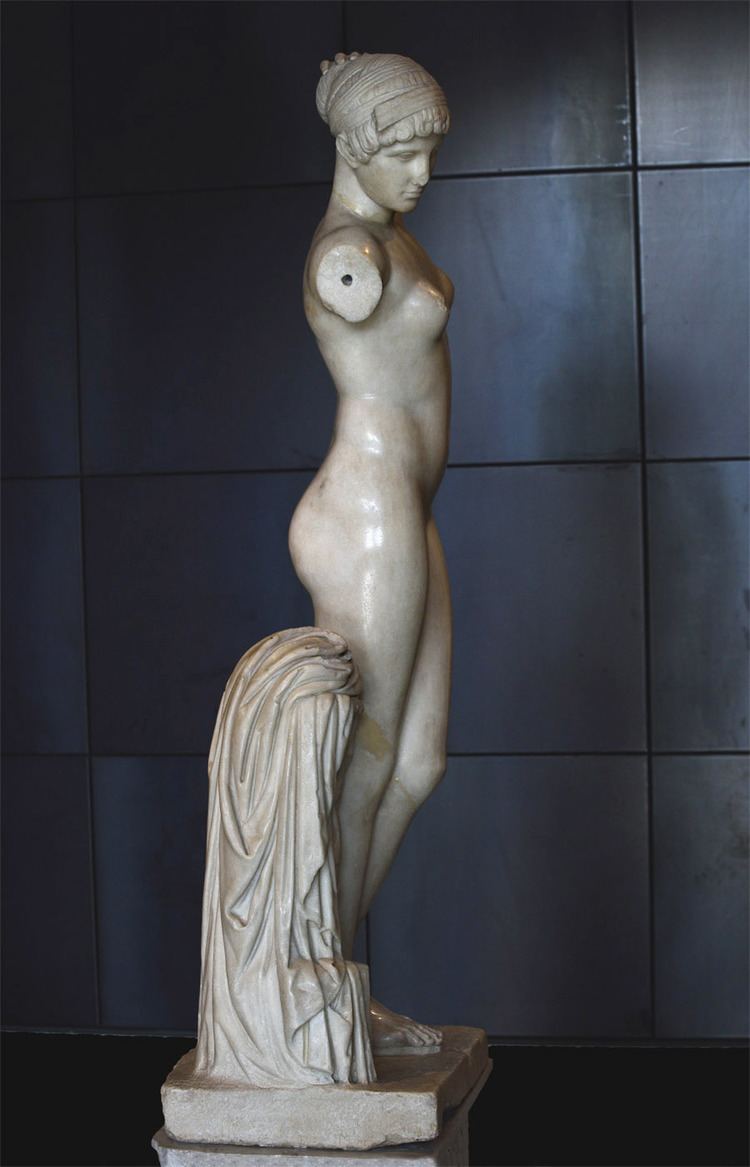
In style the Esquiline Venus is an example of the Pasitelean "eclectic" Neo-Attic school, combining elements from a variety of other previous schools - a Praxitelean idea of the nude female form; a face, muscular torso, and small high breasts in the fifth-century BC severe style; and pressed-together thighs typical of Hellenistic sculptures. Its arms must have broken off when the statue fell after the imperial park in which it stood fell into neglect after antiquity. They have been frequently restored in paintings (see below), but never in reality.
Subject
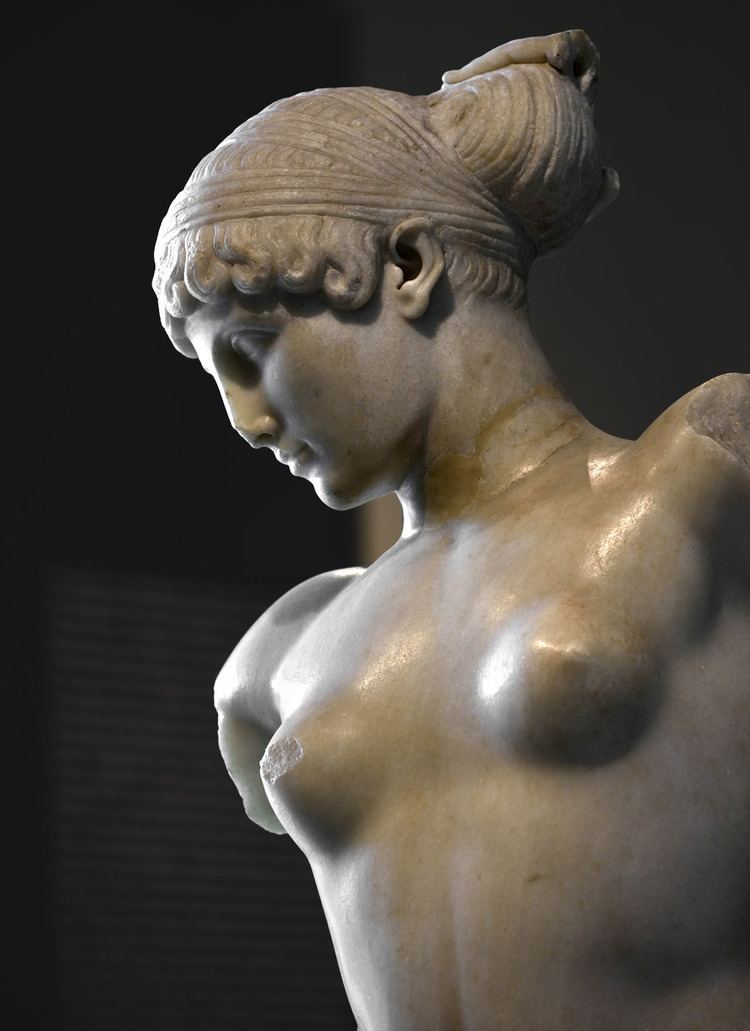
The statue's subject has variously been interpreted, as the Roman goddess Venus (possibly in the form Venus Anadyomene), as a nude mortal female bather, a female version of the diadumenos tying up the hair with a fillet (see below). Its provenance has been characterized both as a Ptolemaic commission or as a copy of one, perhaps a copy commissioned by Claudius himself for the imperial gardens.
In modern art
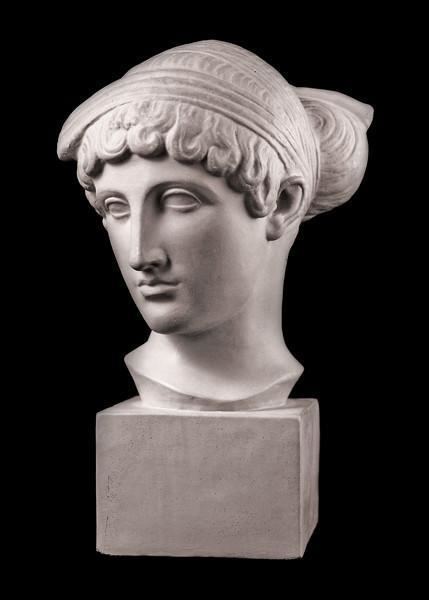
The sculpture inspired many artistic reconstructions in the decade after its discovery. Chief among these are Sir Lawrence Alma-Tadema's A Sculptor's Model (1877) and Edward Poynter's Diadumene (1884). These both portrayed the statue's model binding her hair with a strip of fabric (as with the statue type diadumenos) in preparation for modelling for the sculptor or for taking a bath respectively. Poynter believed this to be the correct reconstruction partly because the remains of the little finger of her left hand are visible on the back of her head, suggesting that her left arm was raised to hold her hair in place, whilst the right hand wound the fabric. At the Museo Centrale Montemartini, the Esquiline Venus is now usually displayed behind a 'pool' (actually a glass floor panel) in tribute to this rendering.
Exhibitions

From December 2006 to February 4, 2007 the sculpture was the centrepiece of the exhibition "Cleopatra and the Caesars" at the Bucerius Kunst Forum at Hamburg, following which, from March to June 2007, she was at the Louvre for the Praxiteles exhibition.
